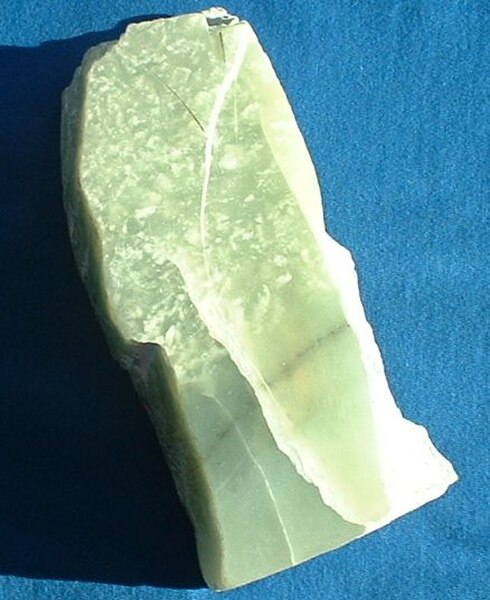The Heshibi, often translated as Mr. He's jade, was a sacred ceremonial bi which had an important role in Chinese history. First appearing during the mid–8th century BCE, it was cut into a ritual bi and recognized as an imperial treasure. The Heshibi became the object of contention among the Warring States, stolen from Chu circa 4th century BCE, acquired by the Zhao, and temporarily traded to Qin in 283 BCE. When the Qin dynasty was founded in 221 BCE, the Heshibi was carved into the Heirloom Seal of the Realm, symbol of the Mandate of Heaven, and subsequently transferred through successive Chinese dynasties until it was lost during the Five Dynasties era in the 10th century.
Relief tracing of Lin Xiangru with Heshibi and King of Qin on Wu Family Shrines stone-relief, from Jinshisuo (金石索).
Uncut jade
Bi jade annulus with dragon designs, 4th to 2nd century BCE
Huang semi-circular jade pendant, 9th to 8th century BCE
The bi is a type of circular ancient Chinese jade artifact. The earliest bi were produced in the Neolithic period, particularly by the Liangzhu culture. Later examples date mainly from the Shang, Zhou and Han dynasties. They were also made in glass.
A Han-era bi, 16 cm in diameter.
Bi disc from the Liangzhu culture (Museum Angewandte Kunst, 2006)
Bi with dragon designs, from the Chu King's Mausoleum at Shizishan Hill, Xuzhou
Bi disc with a dual dragon motif, Warring States period








